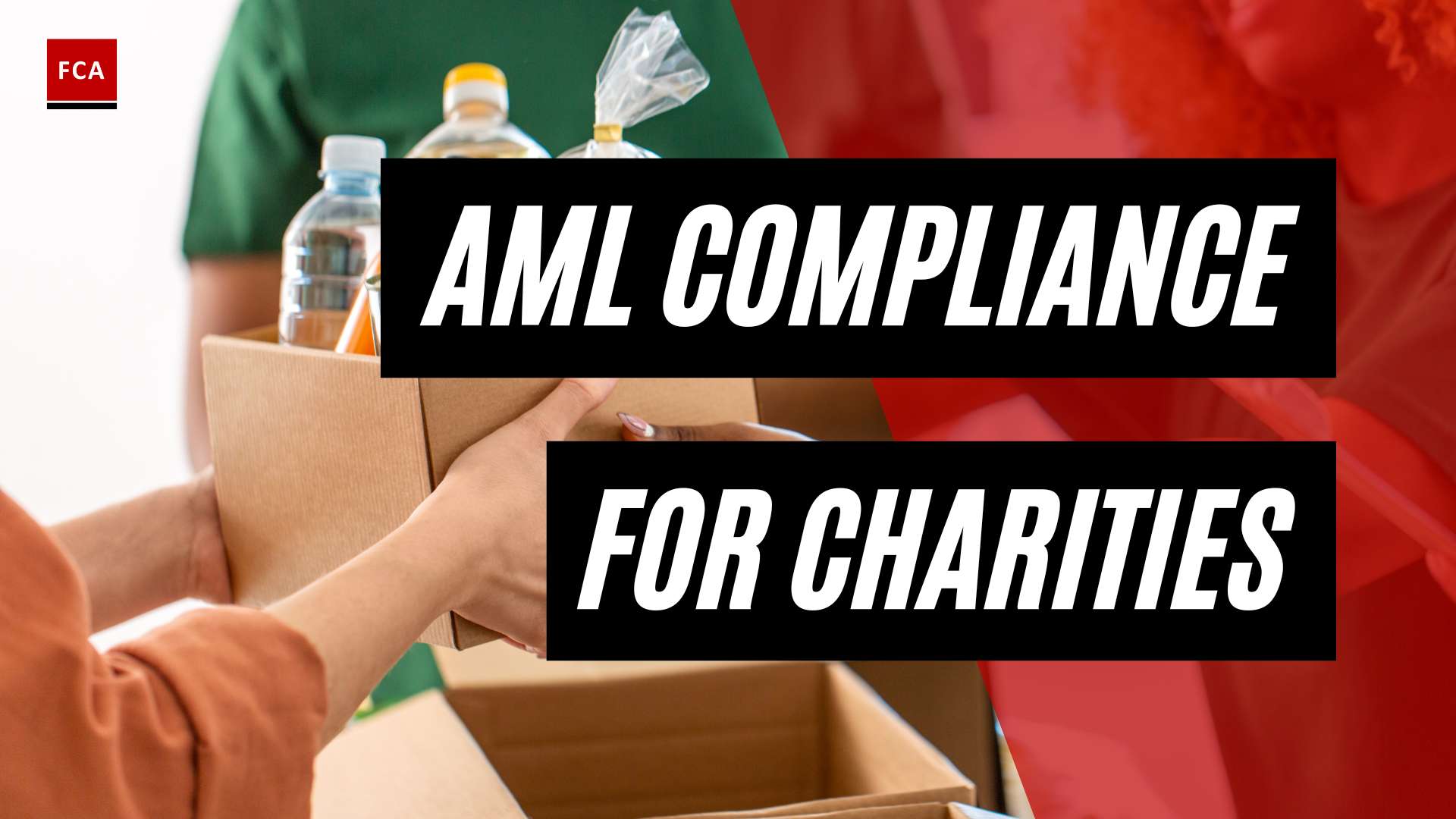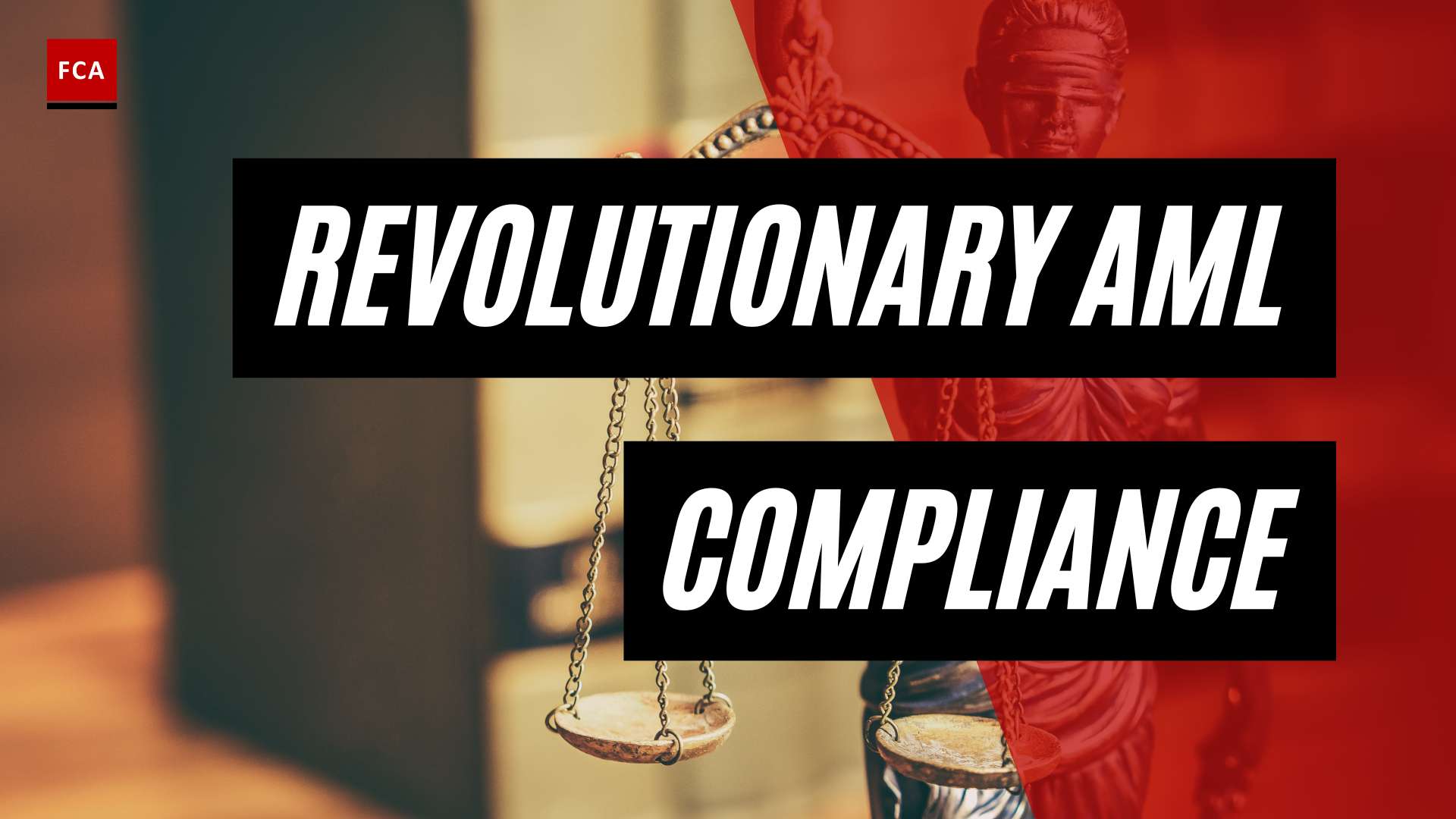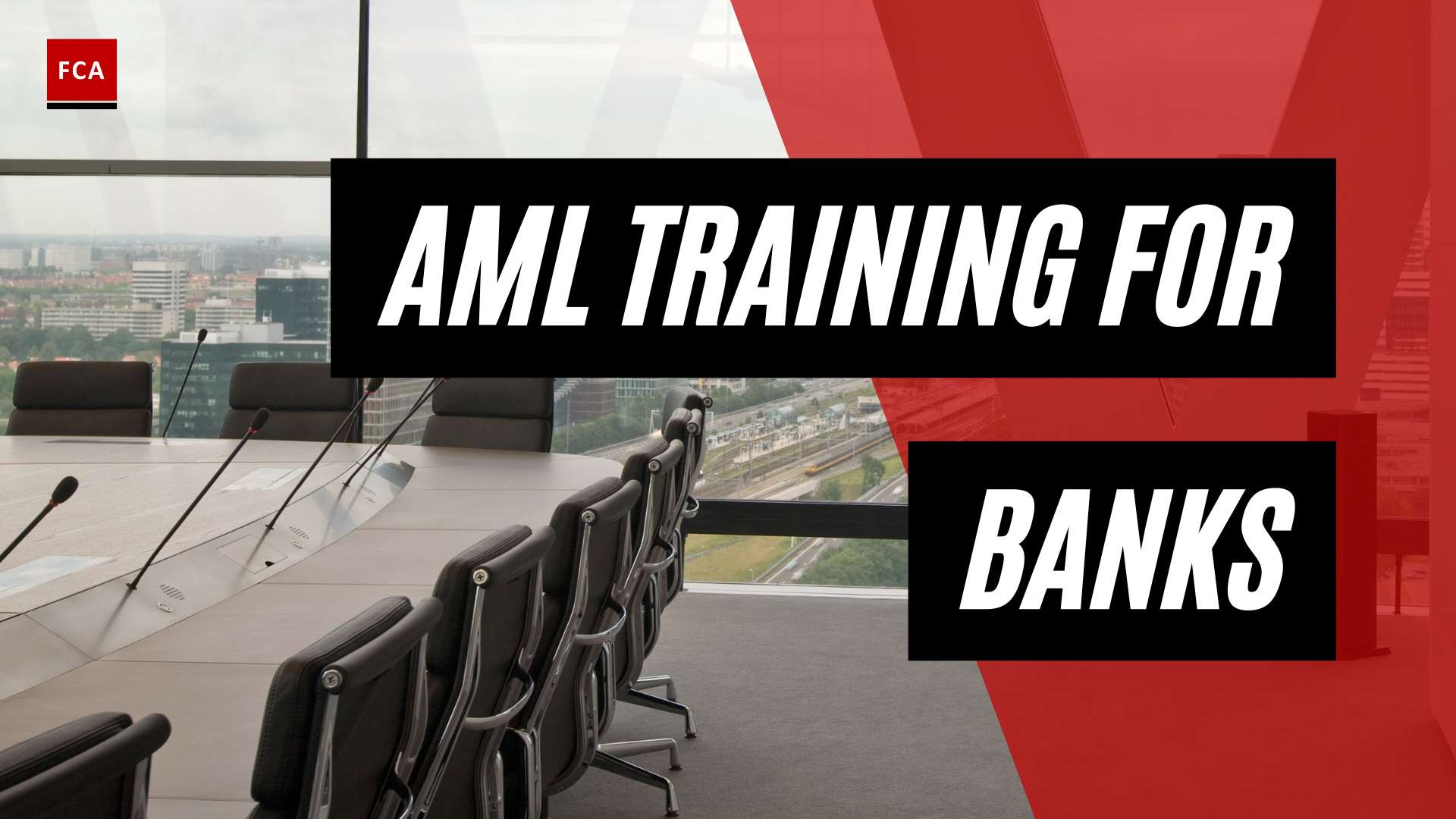Understanding AML Compliance
In the financial landscape, a strong and robust Anti-Money Laundering (AML) compliance program is crucial. But what is AML compliance and why is it so important? In this section, we will explore the definition, importance and key regulatory bodies associated with AML compliance.
Definition and Importance of AML Compliance
AML compliance refers to a set of procedures, laws, and regulations designed to stop the practice of generating income through illegal actions. At its core, it’s all about ensuring that the financial systems and global economy aren’t used as a vehicle for funding criminal activities.
In the context of financial institutions, an AML compliance program is a necessary framework that ensures an organization operates within the legal and ethical parameters set out by various regulatory bodies. Having a robust AML compliance program can help organizations avoid legal complications, financial loss, and damage to reputation that can arise from non-compliance.
Regulatory Bodies and AML Compliance
There are various regulatory bodies that oversee and enforce AML compliance. One such body is the Financial Industry Regulatory Authority (FINRA). FINRA provides various platforms like FinPro, FINRA Gateway, and DR Portal to cater to different needs of industry professionals, member firms, and case participants in accessing compliance-related information and services.
The FINRA Gateway is specifically designed for member firms’ compliance professionals. It provides access to filings and requests, the ability to run reports, and to submit support tickets for compliance-related issues (FINRA AML FAQ).
On the other hand, the platform FinPro is particularly useful for registered representatives, as it enables them to fulfill Continuing Education requirements, view their industry CRD record, and perform other compliance tasks.
Understanding and navigating these platforms can be crucial for professionals working in compliance and risk management. For more information on how to set up an effective AML compliance program, see our AML compliance checklist. For those in charge of overseeing AML compliance within their organizations, check out our guide on the AML compliance officer role.
Essential Elements of an AML Program
An Anti-Money Laundering (AML) program is a key requirement for financial institutions to prevent financial crimes such as money laundering, terrorist economic activities, illegal trafficking, and fraud transactions (Sanction Scanner). The core elements of an effective AML compliance program include risk assessment, internal controls, the role of the compliance officer, and independent audits.
Risk Assessment
A risk assessment is a crucial first step in developing a solid AML compliance program. Financial institutions identify inherent risks in their business related to products, services, customers, and geographic locations. This assessment helps in tailoring an effective AML program that fits the institution’s risk profile (LRG Blog). For a comprehensive guide on conducting a risk assessment, refer to our AML compliance checklist.
Internal Controls
Internal controls in an AML program involve the review of policies, procedures, and processes for AML compliance. This review includes structural and personnel elements such as dual controls, segregation of duties, and mandated reporting systems. The internal controls ensure that the institution can effectively detect and prevent money laundering activities. Check out our AML compliance controls for a detailed overview of internal controls in an AML program.
Compliance Officer Role
A designated Bank Secrecy Act/Anti-Money Laundering (BSA/AML) compliance officer plays a critical role in the AML program. The compliance officer, who should be knowledgeable in AML regulations, is responsible for designing and implementing the AML program, and ensuring the Board and senior management are informed of the institution’s compliance status. For more information about the role and responsibilities of a compliance officer, visit our AML compliance officer page.
Independent Audit
Regular independent audits are a recommended best practice for AML compliance. These audits should occur every 12 to 18 months, or more frequently for higher-risk institutions, and should be responsive to the organization’s risk profile. These audits ensure that the AML program is effective and up-to-date with the latest AML compliance regulations.
Implementing these essential elements in an AML program helps institutions to meet legal AML compliance requirements and safeguard the integrity of the financial system. As part of ensuring effective AML compliance, institutions should also consider the role of technology such as AML compliance software, and invest in regular AML compliance training for their staff.
Challenges of AML Compliance
While the benefits of a robust AML compliance program are clear, implementing and maintaining such a program is not without its challenges. From rapidly changing regulations to issues with technology and communication, organizations must navigate a complex landscape to ensure AML compliance.
Dealing with Regulatory Changes
Regulatory changes pose a significant challenge for AML compliance programs. In a recent survey conducted by ACAMS (Association of Certified Anti-Money Laundering Specialists), 48% of AML compliance officers indicated that managing regulatory changes is the biggest issue they face (KYC Hub).
Regulations can vary by jurisdiction and are frequently updated, making it difficult for organizations to stay compliant. It is crucial for organizations to have a system in place to monitor and respond to these changes quickly. For more information, check out our guide on aml compliance regulations.
Resource Management Issues
Resource management is the second major challenge identified by AML compliance officers, with 41% of respondents highlighting it as a significant issue.
Effective AML compliance programs require substantial resources, including skilled personnel, time, and financial investment. Balancing these resources can be particularly challenging for smaller organizations or those in high-risk industries. Learn more about the role of an aml compliance officer and the importance of aml compliance training.
Technology Constraints
Technology plays a crucial role in AML compliance, but it can also present challenges. According to the ACAMS survey, 39% of AML compliance officers cited technology as a major challenge in effectively managing AML compliance programs.
From outdated systems to the integration of new technologies, organizations must ensure they have the right tools to detect, prevent, and report suspicious activity. Explore our recommendations on aml compliance software to overcome these challenges.
Communication and Data Management
Effective communication between departments is critical for AML compliance. However, 32% of AML compliance officers recognized lack of effective communication as a major issue in their AML compliance programs.
Additionally, 31% of AML compliance officers revealed that data quality and management posed a significant challenge in maintaining effective AML compliance programs. To address these challenges, organizations must improve data governance, collaboration between departments, and ensure they have an effective aml compliance policy in place.
In conclusion, while these challenges can seem daunting, they can be managed with proactive planning, effective resource allocation, and the use of technology. Organizations should regularly review and update their aml compliance framework and aml compliance checklist to ensure they meet the latest aml compliance requirements.
AML Compliance in Different Jurisdictions
Anti-Money Laundering (AML) compliance is not a one-size-fits-all concept. It varies across different jurisdictions due to varying laws, regulations, and priorities. This makes the implementation and management of an effective AML compliance program a complex task, especially for organizations operating across borders.
Cross-border AML Compliance
Managing cross-border and multi-jurisdictional AML compliance standards poses a significant challenge for banks and financial institutions. These entities must navigate and comply with different regulations in different jurisdictions, each with their unique sets of compliance requirements and regulations (Sanction Scanner).
Moreover, customer diligence requirements have increased, necessitating more information gathering. This process can be resource-intensive and challenging to implement effectively. For instance, the Bank Secrecy Act (BSA) Anti Money Laundering (AML) regulations have expanded over the past three decades to cover a wide array of financial institutions. These institutions are now required to have effective compliance programs tailored to their risk profiles (LRG Blog).
A robust AML compliance framework and the use of advanced AML compliance software can greatly assist in managing these cross-border compliance challenges.
National AML/CFT Priorities
In line with the Anti-Money Laundering Act of 2020 (AML Act), the U.S. Department of the Treasury’s Financial Crimes Enforcement Network (FinCEN) published the first national priorities for anti-money laundering and countering the financing of terrorism (AML/CFT priorities). These priorities are consistent with the National Strategy for Combating Terrorist and Other Illicit Financing as required by the AML Act.
The AML Act also mandates FinCEN, in consultation with federal functional regulators, relevant state financial regulators, and relevant national security agencies, to update the AML/CFT priorities at least once every four years. FinCEN is further empowered to promulgate regulations within 180 days of the publication of the priorities to carry out the AML/CFT priorities.
However, the Office of the Comptroller of the Currency (OCC), in collaboration with various regulatory bodies, clarifies that the publication of the AML/CFT priorities does not immediately impose new obligations on banks. Instead, the statement explains how the priorities will be utilized (OCC Bulletin 2021-29).
Adhering to these national AML/CFT priorities is a critical part of any comprehensive AML compliance program. It’s important for financial institutions to stay updated with these changes and incorporate them into their AML compliance framework. Regular AML compliance training can help ensure that all relevant stakeholders within an organization are up-to-date with these priorities.
Technology in AML Compliance
Technology has become an essential part of an effective AML compliance program, assisting organizations in monitoring and detecting suspicious activities, performing due diligence checks, and maintaining compliance with regulatory requirements. This section will explore the role of artificial intelligence (AI) in AML compliance and introduce some common compliance platforms and tools.
Role of AI in AML Compliance
AI has come to play a significant role in modern AML compliance efforts. Its capabilities extend to various operational tasks, including scanning names, verifying identities, monitoring transactions, and assessing customer risk levels. These functions aid in the prevention of money laundering and other financial crimes, contributing to a more robust and efficient AML compliance program.
The use of AI can help automate repetitive tasks, thus freeing up resources that can be better utilized elsewhere. AI can also help to reduce errors and improve the accuracy of risk assessment and reporting processes, enhancing the overall effectiveness of the AML compliance program. In order to harness the full potential of AI, organizations should consider incorporating AML compliance software that leverages AI technology into their compliance strategy.
Compliance Platforms and Tools
In addition to AI, there are various platforms and tools available that can assist organizations with their AML compliance efforts. For example, FINRA provides several platforms catered to different needs of industry professionals, member firms, and case participants.
These platforms include:
- FINRA Gateway: A platform for member firms’ compliance professionals. It provides access to filings and requests, the ability to run reports, and the option to submit support tickets for compliance-related issues.
- FinPro: A platform for industry professionals. It allows registered representatives to fulfill Continuing Education requirements, view their industry CRD record, and perform other compliance tasks.
These platforms can simplify the process of maintaining compliance and provide valuable resources for professionals in the industry. By leveraging these tools, organizations can enhance their AML compliance program and meet their regulatory obligations more effectively.
Whether an organization opts to utilize AI technology or dedicated compliance platforms, the application of these tools can significantly enhance the effectiveness and efficiency of an AML compliance program. As technology continues to evolve, organizations must remain adaptable and proactive in incorporating these advancements into their compliance strategies. For more information on building an effective AML compliance program, refer to our AML compliance checklist.
Ensuring Effective AML Compliance
To maintain the integrity of an organization’s financial system and meet the AML compliance requirements, it’s crucial to implement effective strategies. These include regular audits and updates, training, and understanding the consequences of non-compliance.
Regular Audits and Updates
Independent third-party audits are a recommended best practice for an AML compliance program. These audits should be conducted every 12 to 18 months, or more frequently for higher risk institutions, and should be responsive to the organization’s risk profile. Regular audits are essential for identifying potential weaknesses in the AML compliance controls, ensuring that the program is continually updated to reflect changes in regulatory requirements and the organization’s risk profile. For a comprehensive audit guide, refer to our AML compliance checklist.
Training and Skill Development
Training is a vital component of an effective AML compliance program. Regular AML compliance training should be provided to all employees, especially those in key roles such as the AML compliance officer. Training should cover the latest AML laws and regulations, the organization’s AML policies and procedures, and the roles and responsibilities of employees in preventing money laundering and terrorist financing. Continuous education ensures that staff are well-equipped to identify and report suspicious activities, enhancing the organization’s ability to prevent financial crimes.
Consequences of Non-compliance
Non-compliance with AML obligations can result in significant consequences. In 2019 alone, organizations that failed to meet AML compliance were fined a total of $8 billion. However, the impact of non-compliance extends beyond financial penalties. It can also lead to reputational damage, loss of customer trust, and operational disruptions. Therefore, it’s essential to understand and adhere to the AML compliance regulations to avoid such consequences.
With the Anti-Money Laundering Act of 2020 (AML Act), the U.S. Department of the Treasury’s Financial Crimes Enforcement Network (FinCEN) published the first national priorities for anti-money laundering and countering the financing of terrorism (AML/CFT priorities) (OCC Bulletin 2021-29). These priorities, and related regulations, are aimed at assisting banks in combating money laundering and the financing of terrorism effectively, emphasizing the crucial role financial institutions play in safeguarding the integrity of the financial system.
In conclusion, ensuring effective AML compliance is a multifaceted process that involves regular audits and updates, ongoing training, and understanding the consequences of non-compliance. Leveraging technology, such as AML compliance software, can also significantly enhance the efficiency and effectiveness of an organization’s AML compliance program.








